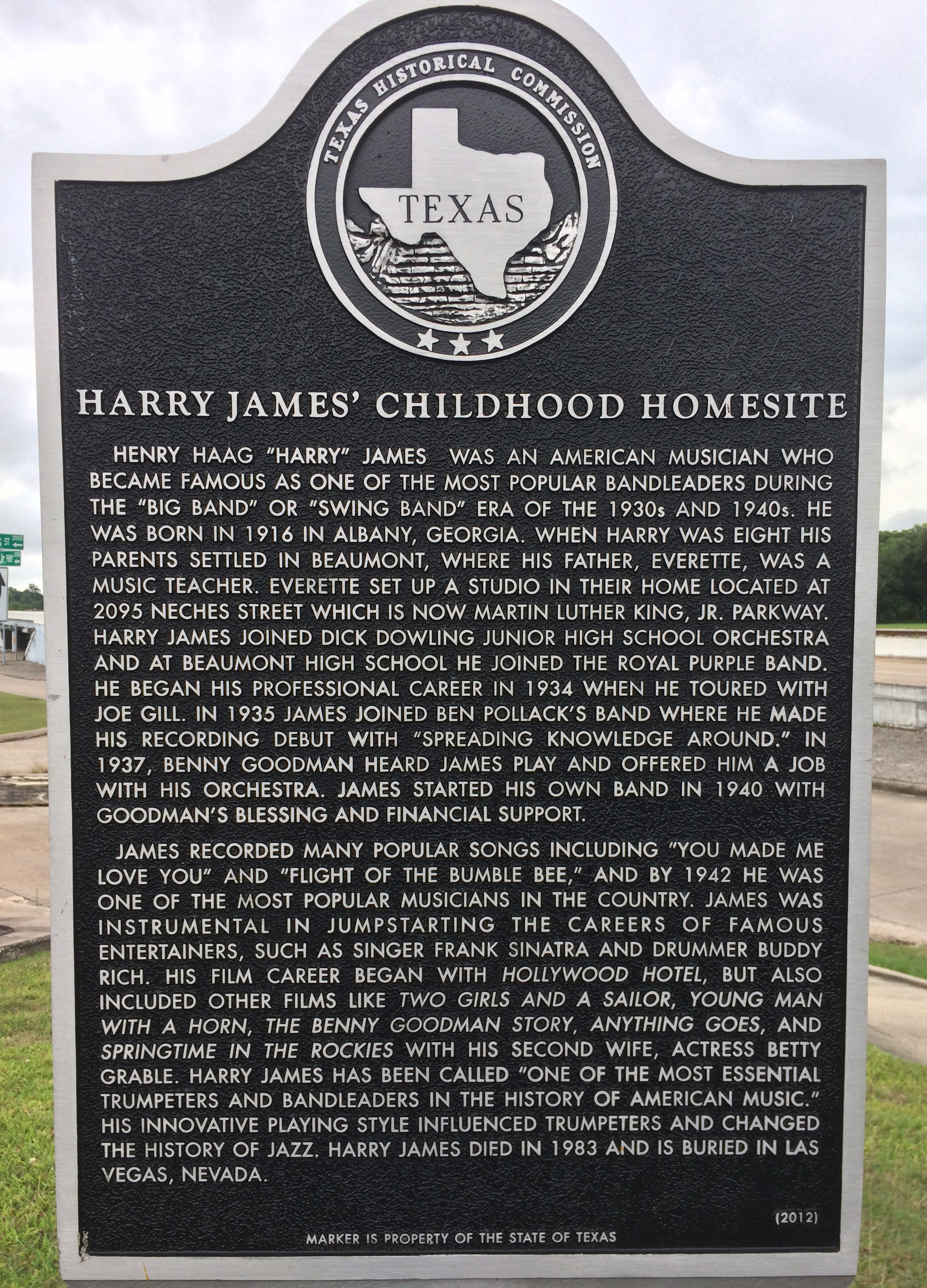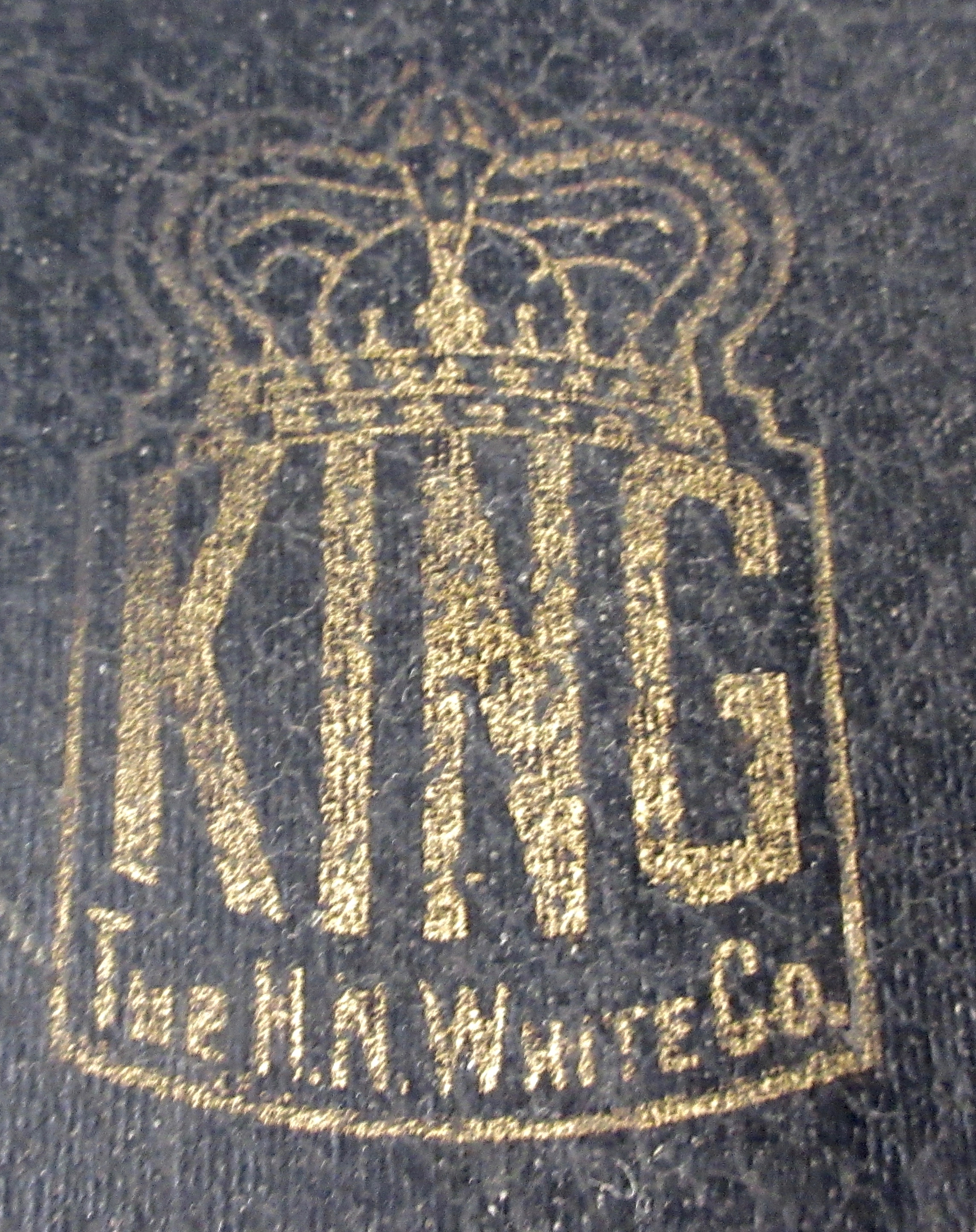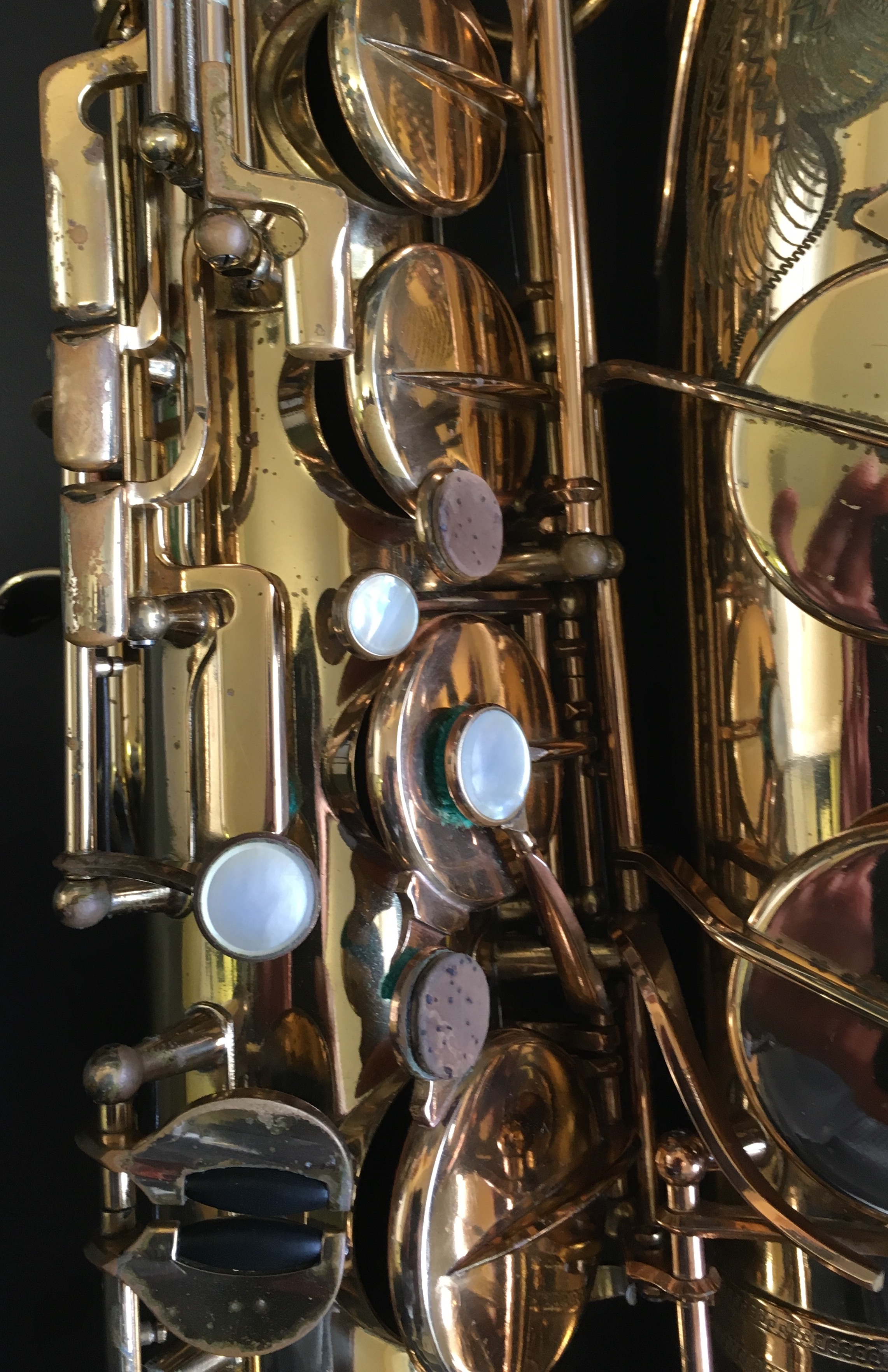|
Balanced Action
Balanced action refers to new models of saxophones and trumpets introduced by Henri Selmer Paris, Henri Selmer & Cie during the 1930s, and has different meanings depending on whether one is referring to the trumpet or saxophone model. Balanced action trumpets Balanced action trumpets have the valve assembly set forward (170mm vs. 140mm), closer to the bell. This style of trumpet was first developed by the Henri Selmer Paris company in 1933 for Louis Armstrong, and was also famously used by Harry James, who preferred the configuration because of his long arms. Similar trumpets were also made by F. E. Olds (the Olds Recording Model) beginning in 1950 and King Musical Instruments, with the last instruments of this type being manufactured in the early 1970s. Balanced action saxophones The Selmer Balanced Action saxophone was manufactured by Selmer from 1935 through 1947. It introduced a revolutionary new layout for the key table operating the G and low C, B, and B keys. The layout ... [...More Info...] [...Related Items...] OR: [Wikipedia] [Google] [Baidu] |
Saxophones
The saxophone (often referred to colloquially as the sax) is a type of single-reed woodwind instrument with a conical body, usually made of brass. As with all single-reed instruments, sound is produced when a reed on a mouthpiece vibrates to produce a sound wave inside the instrument's body. The pitch is controlled by opening and closing holes in the body to change the effective length of the tube. The holes are closed by leather pads attached to keys operated by the player. Saxophones are made in various sizes and are almost always treated as transposing instruments. Saxophone players are called '' saxophonists''. The saxophone is used in a wide range of musical styles including classical music (such as concert bands, chamber music, solo repertoire, and occasionally orchestras), military bands, marching bands, jazz (such as big bands and jazz combos), and contemporary music. The saxophone is also used as a solo and melody instrument or as a member of a horn section in some sty ... [...More Info...] [...Related Items...] OR: [Wikipedia] [Google] [Baidu] |
Trumpets
The trumpet is a brass instrument commonly used in classical and jazz ensembles. The trumpet group ranges from the piccolo trumpet—with the highest register in the brass family—to the bass trumpet, pitched one octave below the standard B or C trumpet. Trumpet-like instruments have historically been used as signaling devices in battle or hunting, with examples dating back to at least 1500 BC. They began to be used as musical instruments only in the late 14th or early 15th century. Trumpets are used in art music styles, for instance in orchestras, concert bands, and jazz ensembles, as well as in popular music. They are played by blowing air through nearly-closed lips (called the player's embouchure), producing a "buzzing" sound that starts a standing wave vibration in the air column inside the instrument. Since the late 15th century, trumpets have primarily been constructed of brass tubing, usually bent twice into a rounded rectangular shape. There are many distinct t ... [...More Info...] [...Related Items...] OR: [Wikipedia] [Google] [Baidu] |
Henri Selmer Paris
Henri Selmer Paris is a French enterprise, manufacturer of musical instruments based at Mantes-la-Ville near Paris. Founded in 1885, it is known as a producer of professional-grade woodwind and brass instruments, especially saxophones, clarinets and trumpets. Henri Selmer Paris used to be family-owned but was sold to Argos-Wityu in 2018. Selmer Paris instruments have been played by many well-known saxophonists such as Marcel Mule, Claude Delangle, Frederick Hemke, Charlie Parker, John Coltrane, Paul Desmond, Herschel Evans, Zoot Sims, Michael Brecker, Sonny Rollins, Ornette Coleman and Coleman Hawkins. Among famous Selmer Clarinet players is Benny Goodman in his early career. History Selmer Paris In the late nineteenth century, brothers Alexandre and Henri Selmer graduated from the Paris Conservatory as clarinetists. They were the great-grandchildren of French military drum major Johannes Jacobus Zelmer, grandchildren of Jean-Jacques Selmer, the Army Chief of Music, and two of ... [...More Info...] [...Related Items...] OR: [Wikipedia] [Google] [Baidu] |
Louis Armstrong
Louis Daniel Armstrong (August 4, 1901 – July 6, 1971), nicknamed "Satchmo", "Satch", and "Pops", was an American trumpeter and vocalist. He was among the most influential figures in jazz. His career spanned five decades and several eras in the history of jazz. Armstrong was born and raised in New Orleans. Coming to prominence in the 1920s as an inventive trumpet and cornet player, Armstrong was a foundational influence in jazz, shifting the focus of the music from collective improvisation to solo performance. Around 1922, he followed his mentor, Joe "King" Oliver, to Chicago to play in the . In Chicago, he spent time with other popular jazz musicians, reconnecting with his friend Bix Beiderbecke and spending time with Hoagy Carmichael and Lil Hardin. He earned a reputation at "cutting contests", and his fame reached band leader Fletcher Henderson. Henderson persuaded Armstrong to come to New York City, where he became a featured and musically influential band soloist ... [...More Info...] [...Related Items...] OR: [Wikipedia] [Google] [Baidu] |
Harry James
Harry Haag James (March 15, 1916 – July 5, 1983) was an American musician who is best known as a trumpet-playing band leader who led a big band from 1939 to 1946. He broke up his band for a short period in 1947 but shortly after he reorganized and was active again with his band from then until his death in 1983. He was especially known among musicians for his technical proficiency as well as his Tone (musical instrument), tone, and was influential on new trumpet players from the late 1930s into the 1940s. He was also an actor in a number of films that usually featured his band. Early life Harry James was born in Albany, Georgia, United States, the son of Everett Robert James, a bandleader in a traveling circus, the Mighty Haag Circus, and Myrtle Maybelle (Stewart), an acrobat and horseback rider. He started performing with the circus at an early age, first as a contortionist at age of four, then playing the snare drum in the band from about the age of six. It was at this age ... [...More Info...] [...Related Items...] OR: [Wikipedia] [Google] [Baidu] |
King Musical Instruments
King Musical Instruments (originally founded as the H. N. White Company) is a former musical instrument manufacturing company located in Cleveland, Ohio, that used the trade name King for its instruments. In 1965 the company was acquired by the Seeburg Corporation of Eastlake, Ohio, and the name changed to "King Musical Instruments". After four changes of ownership for King Musical Instruments since 1980, the rights to the ''King'' name are currently owned by Conn-Selmer, Inc., a subsidiary of Steinway Musical Instruments, who use it as a brand for brass instruments including trumpets, trombones, tubas, and marching brasses. History The company was founded as the "H.N. White Company" in 1893 by Henderson White, an engraver and instrument repairman. White designed a trombone for Thomas King, a local player. It became the company's first successful model when it was adopted by Al Pinard, then a famous trombone player. White later designed other brass instrument models, inc ... [...More Info...] [...Related Items...] OR: [Wikipedia] [Google] [Baidu] |
Ergonomic
Human factors and ergonomics (commonly referred to as human factors) is the application of psychological and physiological principles to the engineering and design of products, processes, and systems. Four primary goals of human factors learning are to reduce human error, increase productivity, and enhance safety, system availability, and comfort with a specific focus on the interaction between the human and the engineered system. The field is a combination of numerous disciplines, such as psychology, sociology, engineering, biomechanics, industrial design, physiology, anthropometry, interaction design, visual design, user experience, and user interface design. Human factors research employs methods and approaches from these and other knowledge disciplines to study human behavior and generate data relevant to the four primary goals above. In studying and sharing learning on the design of equipment, devices, and processes that fit the human body and its cognitive abilities, the ... [...More Info...] [...Related Items...] OR: [Wikipedia] [Google] [Baidu] |
Coleman Hawkins
Coleman Randolph Hawkins (November 21, 1904 – May 19, 1969), nicknamed "Hawk" and sometimes "Bean", was an American jazz tenor saxophonist.Yanow, Scot"Coleman Hawkins: Artist Biography" AllMusic. Retrieved December 27, 2013. One of the first prominent jazz musicians on his instrument, as Joachim E. Berendt explained: "there were some tenor players before him, but the instrument was not an acknowledged jazz horn". Hawkins biographer John Chilton described the prevalent styles of tenor saxophone solos prior to Hawkins as "mooing" and "rubbery belches." Hawkins cited as influences Happy Caldwell, Stump Evans, and Prince Robinson, although he was the first to tailor his method of improvisation to the saxophone rather than imitate the techniques of the clarinet. Hawkins' virtuosic, arpeggiated approach to improvisation, with his characteristic rich, emotional, and vibrato-laden tonal style, was the main influence on a generation of tenor players that included Chu Berry, Charlie Bar ... [...More Info...] [...Related Items...] OR: [Wikipedia] [Google] [Baidu] |
Body And Soul (1930 Song)
"Body and Soul" is a popular song and jazz standard written in 1930 with music by Johnny Green and lyrics by Edward Heyman, Robert Sour and Frank Eyton. It was also used as the musical theme and underscoring in the American film noir boxing drama '' Body and Soul''. Background "Body and Soul" was written in New York City for the British actress and singer Gertrude Lawrence, who introduced it to London audiences. Published in England, it was first performed in the United States by Libby Holman in the 1930 Broadway revue ''Three's a Crowd''. In Britain the orchestras of Jack Hylton and Ambrose recorded the ballad first in the same week in February 1930. In the United States, the tune grew quickly in popularity, and by the end of 1930 at least 11 American bands had recorded it. Louis Armstrong was the first jazz musician to record "Body and Soul", in October 1930, but it was Paul Whiteman and Jack Fulton who popularized it in United States. "Body and Soul" is one of the most r ... [...More Info...] [...Related Items...] OR: [Wikipedia] [Google] [Baidu] |
Selmer Mark VI
The Selmer Mark VI is a saxophone produced from 1954 to 1981. Production shifted to the Mark VII for the tenor and alto in the mid-1970s (see discussion of serial numbers below), and to the Super Action 80 for the soprano and baritone saxophones in 1981. The sopranino saw limited production until about 1985. Selmer debuted the Mark VI in 1954 with sopranino, soprano, alto, tenor, baritone and bass saxophones, until the introduction of the Mark VII model in 1975. Since the Mark VI design continued for sopraninos, sopranos, baritones, or bass saxes, they did not have a Mark VII model. There are reports of a limited number of baritone saxophones labeled as Mark VIIs, but these horns were of the same design as the Mark VI. All Mark VI saxophones were manufactured in France. After manufacture, instruments designated for the British/Canadian or American markets were shipped unassembled and unengraved to their respective markets for completion. The style of engraving on the bell of ... [...More Info...] [...Related Items...] OR: [Wikipedia] [Google] [Baidu] |

.jpg)



.jpg)
